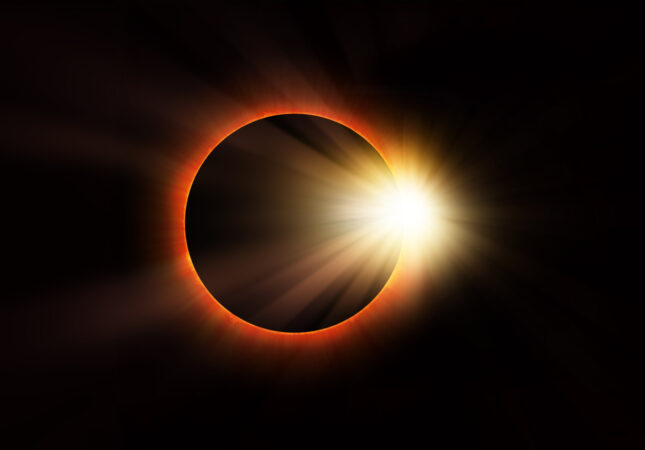The countdown has already begun and expectations are increasing for the total solar eclipse scheduled to occur on Monday, the eighth of this month: on that day the Moon will temporarily remain between the Sun and the Earth and will end up covering its shine at the bridge of the sky. To get dark in broad daylight.
A solar eclipse, especially when it is as total as the one occurring on this occasion, is an astronomical phenomenon that many want to experience in its entirety, and not just because of the multiple images it will leave behind. This time, it will be possible to enjoy it in North America, Mexico and Canada: there are other regions that will partially experience it.
According to NASA, the eclipse will begin in the South Pacific Ocean and will reach the Pacific coast of Mexico at approximately 11:07 am (7:07 pm in Portugal). It will then head to the United States, where Texas will be the first state to plunge into darkness. This phenomenon will then pass through Oklahoma, Arkansas, Missouri, Tennessee, Illinois, Kentucky, Indiana, Ohio, Michigan, Pennsylvania, New York, Vermont, New Hampshire and Maine. Only then will it reach Canada.
In the rest of the world, including Portugal, the eclipse will be only partial, meaning the moon will obscure most of the sun's face, but not completely.
Since the announcement, several messages have appeared containing recommendations and warnings to reduce the effects that may occur as a result of the increase in the number of visitors to certain areas – in particular, the Spanish newspaper “ABC” reported, in Lorain, Ohio, which, according to astronomical calculations, is the one that will witness the longest total eclipse. a period.
In this city, hotel reservations have long been exhausted, but more people are expected to arrive unexpectedly, with no return, prompting authorities to recommend citizens stock up on water and food, as well as fuel. But schools will also suffer from exceptional measures.
Some lessons will be canceled next Monday to avoid problems. In the northwestern Mexican state of Sinaloa, the Ministry of Public Education and Culture decided to postpone the return to schools for another day after the Holy Week holiday “to ensure the safety of primary school children.”
In the same context, colleges at the University of Texas in San Antonio also suspended classes for a few hours due to “the importance of this astronomical event.” It is worth noting that the United States will not witness another total solar eclipse until 2044, which is why it was decided that there will be no classes for a few hours so that students and teachers do not miss this natural phenomenon.
The total solar eclipse is the largest event in the astronomical calendar of the year, but you can take note: on October 2nd there will be another solar eclipse, in this case annular and visible in South America.
The next total solar eclipse will occur on August 12, 2026 and will be visible from several points in Europe, including Portugal.

“Friendly zombie fanatic. Analyst. Coffee buff. Professional music specialist. Communicator.”

